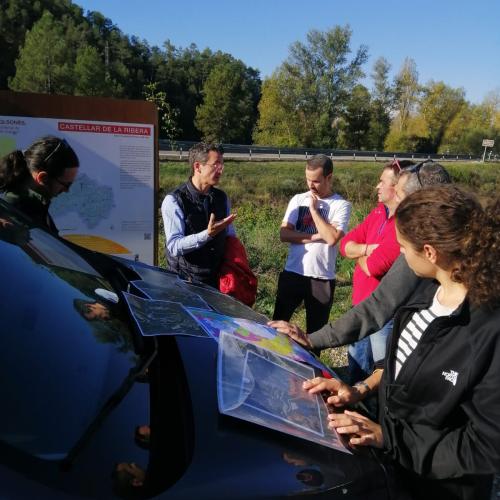
Managing wildfire risk in Catalonia’s recreational areas and natural parks
Insights from the FIRE-SCENE pilot in Cap de Creus and the Ribera Salada River basin (Catalonia, Spain)
Catalonia’s natural parks and recreational areas are facing growing wildfire risk, especially during the summer months when tourist activity is at its highest. The FIRE-SCENE project is tackling this issue by focusing on two key locations: Cap de Creus Natural Park, on the border with France, and the Ribera Salada River basin. Both areas have experienced major wildfires in recent decades and are popular destinations for tourism.
Cap de Creus, in the northeast of Catalonia, is a coastal park shaped by wind and sea, with striking geological formations and rich biodiversity. Its coastline includes many small coves and beaches, making it a hotspot for swimming, hiking, kayaking, and nature tourism. However, the park’s exposure to strong winds - especially the north wind called Tramuntana - the Mediterranean climate and the anthropogenic pressure make it particularly prone to wildfires. Major fires in 2000 and 2021 have underscored this risk. This combination of intense recreational use and wildfire susceptibility highlights the need for targeted fire prevention and management strategies.
Ribera Salada, located in the inland Pre-Pyrenees, represents a river area frequented for swimming and outdoor leisure, surrounded by scattered homes and rural communities. The region has seen several serious wildfires, including in 1998 and most recently in 2022. Its combination of recreational use and dispersed population creates complex challenges for land management and emergency management.
The pilot’s objectives include developing operational and tactical guidelines for wildfire risk management, improving governance and risk awareness mechanisms to cope with emerging Civil Protection Challenges (CPCs) in such tourist sites.
The methodology includes risk analysis, identifying emergency scenarios considering normal and extreme wildfire behaviours. FIRE-SCENE analyses risk construction and deconstruction drivers, taking into account the diversity of land uses and local activities. The project discusses the potential impact of wildfires and associated CPCs with local authorities and stakeholders to explore effective integrated risk reduction strategies.
Based on these insights, FIRE-SCENE plans specific measures to reduce wildfire risk, with a strong emphasis on public awareness and communication. The process also involves defining clear guidelines and protocols to integrate Civil Protection requirements into land use and sectoral planning tools, both at the site and regional levels.
The pilot also includes a review of existing emergency plans and tools, and interviews with key stakeholders. FIRE-SCENE pays particular attention to access restrictions during high-risk periods, guided by Catalan wildfire emergency plans and protocols. A challenge is to balance the necessary safety measures when applying the access restriction with the need to enjoy natural sites like rivers or natural parks, which often serve as a vital climate refuge during periods of extreme heat and have relevant activities for the local economy.
Stakeholder engagement is a key component of FIRE-SCENE; this is why the project involved key stakeholders at its initial stage, taking them into account in designing and defining the pilot. As part of the pilot initiative, FIRE-SCENE meets with local authorities to identify the specific needs of each area. The project will discuss proposed measures with municipal representatives, landowners, and other local stakeholders, who are expected to actively contribute to shaping coordinated wildfire management strategies tailored to the local context.
Ultimately, this pilot study aims to strengthen Civil Protection, reduce exposure and vulnerability, and promote integrated wildfire management in recreational areas and natural parks, responding to the growing challenges posed by climate change and increasing human presence.